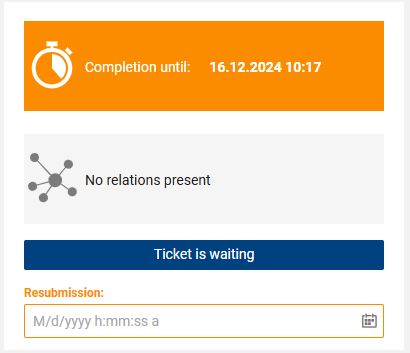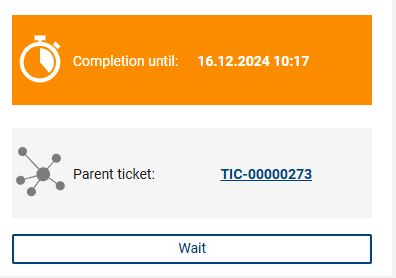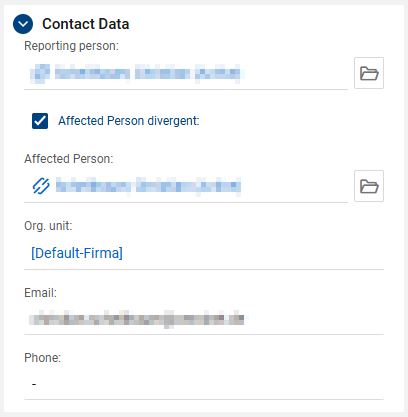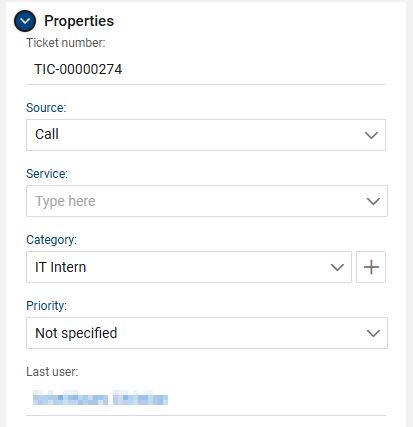The ticket properties contain all the important information and functions that define a ticket in more detail. Some of these are already filled in during the first entry steps, but can be further detailed and supplemented in the "Classification" ticket state . Individual fields and functions are only displayed for certain ticket types. Starting from release 2.4 this section is to be found in the left third of the from.


SLA times (if available) are displayed in different colours depending on the status of the SLA.
‘No relations present’ would indicate if the ticket is linked to a main ticket or if the ticket has sub-tickets, and also if approvals are to be carried out.
'Wait’ button - if the button is highlighted in blue, the ticket is in 'Waiting' status; a resubmission date must be entered for this status (appears after clicking on the button)

Contact data overview includes, the reporting person and, if different, the person concerned with their name, email, telephone, org unit and, depending on the ticket type and maintenance, the cost center.
(The section is only expanded in the ‘New’ status)

Properties include ticket number, request type, RFC type, origin, service, category, impact, urgency, priority and last editor. These fields can differ depending on the ticket type.
(The section is expanded to the ‘Classification’ status)
•Source: The source indicates the communication channel through which a ticket was received, e.g. e-mail, Self-Service Portal, telephone, etc.
•Service: If the service orientation is activated by the administrator and corresponding services are mapped in the Asset DB, the affected service can be selected here in addition to the category. The service may have been assigned a different SLA contract than the person concerned..
•Category: The ticket category controls the correct classification of a ticket and the assignment of a default responsible. The category is a mandatory field that has to be filled in "Classification" at the latest. The category can be filled automatically via a ticket template or a defined default category for the ticket type. However, this can be changed again at any time.
•Cost center: Only displayed, when activated for the ticket type. Cost centers assigned directly to the person concerned or to the top-level org unit can be selected. The field is automatically filled if a unique direct cost center exists for the person
•Priority: The priority can either be selected directly or calculated from the priority or the impact of a ticket, depending on how the administrator has specified this for the respective ticket process. The gradations and calculation matrix of the priority can be defined by the administrator. The indirect calculation of the priority takes place when the ticket is saved. For ticket types Change and Release, further classification options are available, e.g. for "Risk".